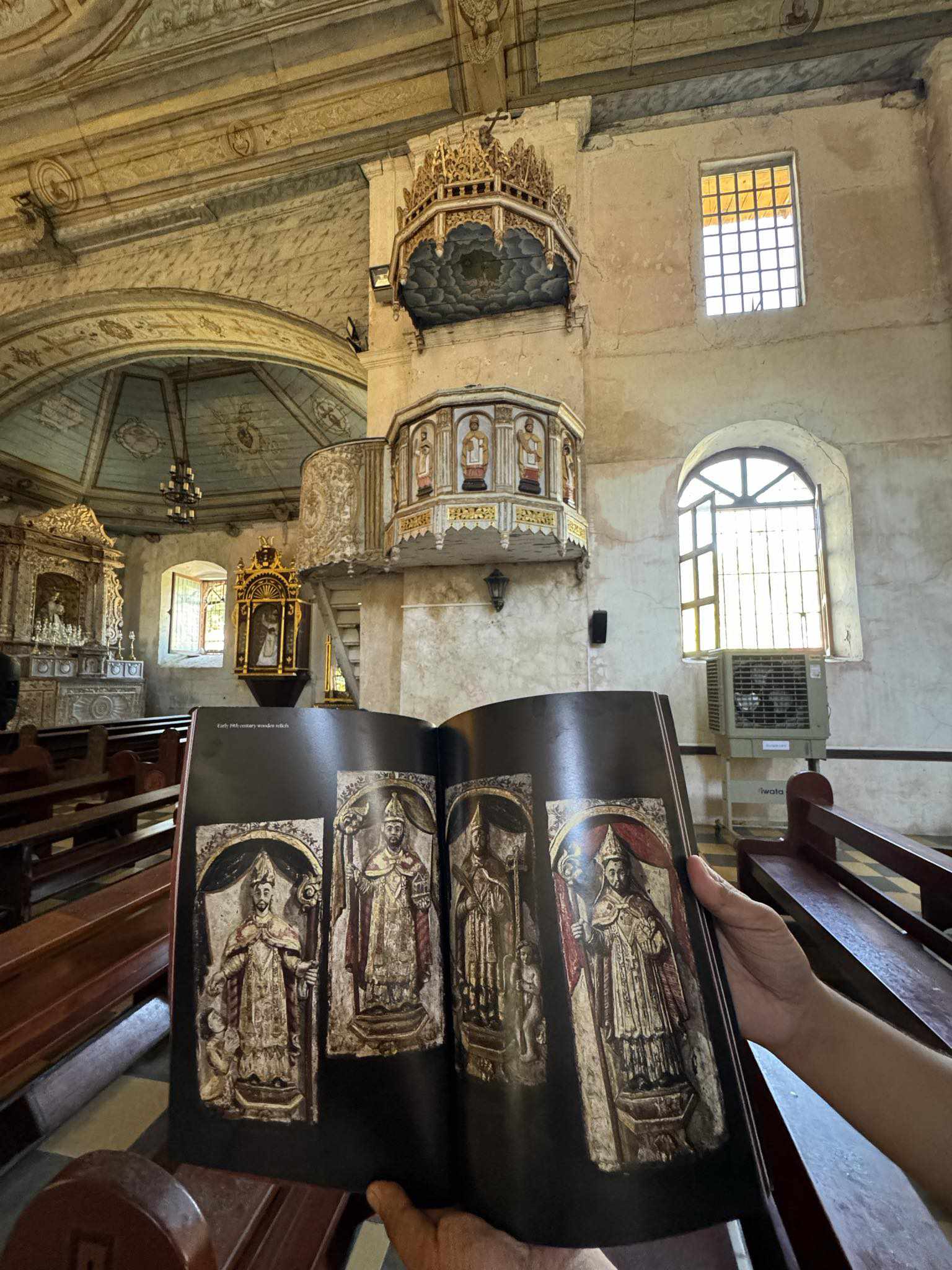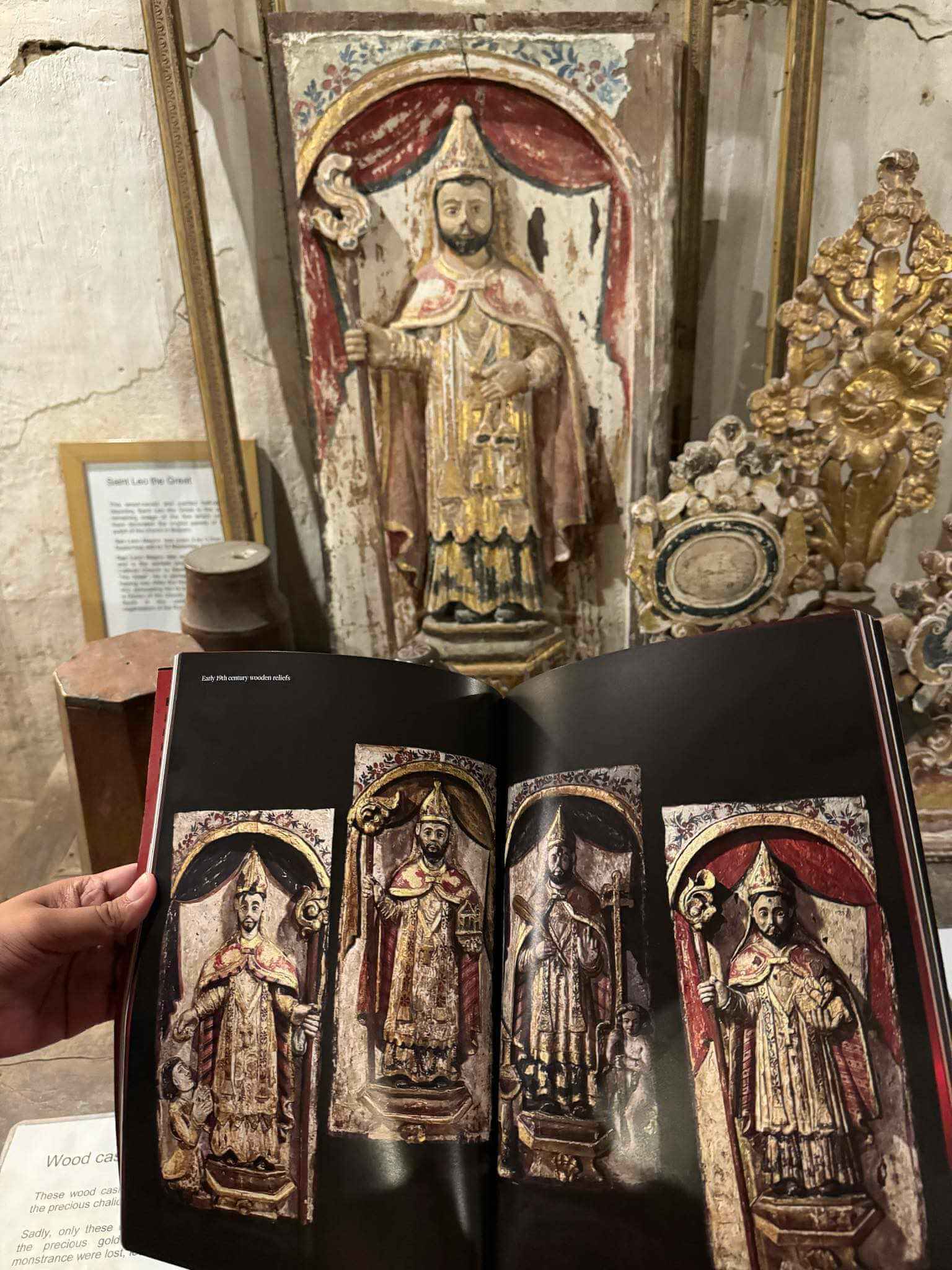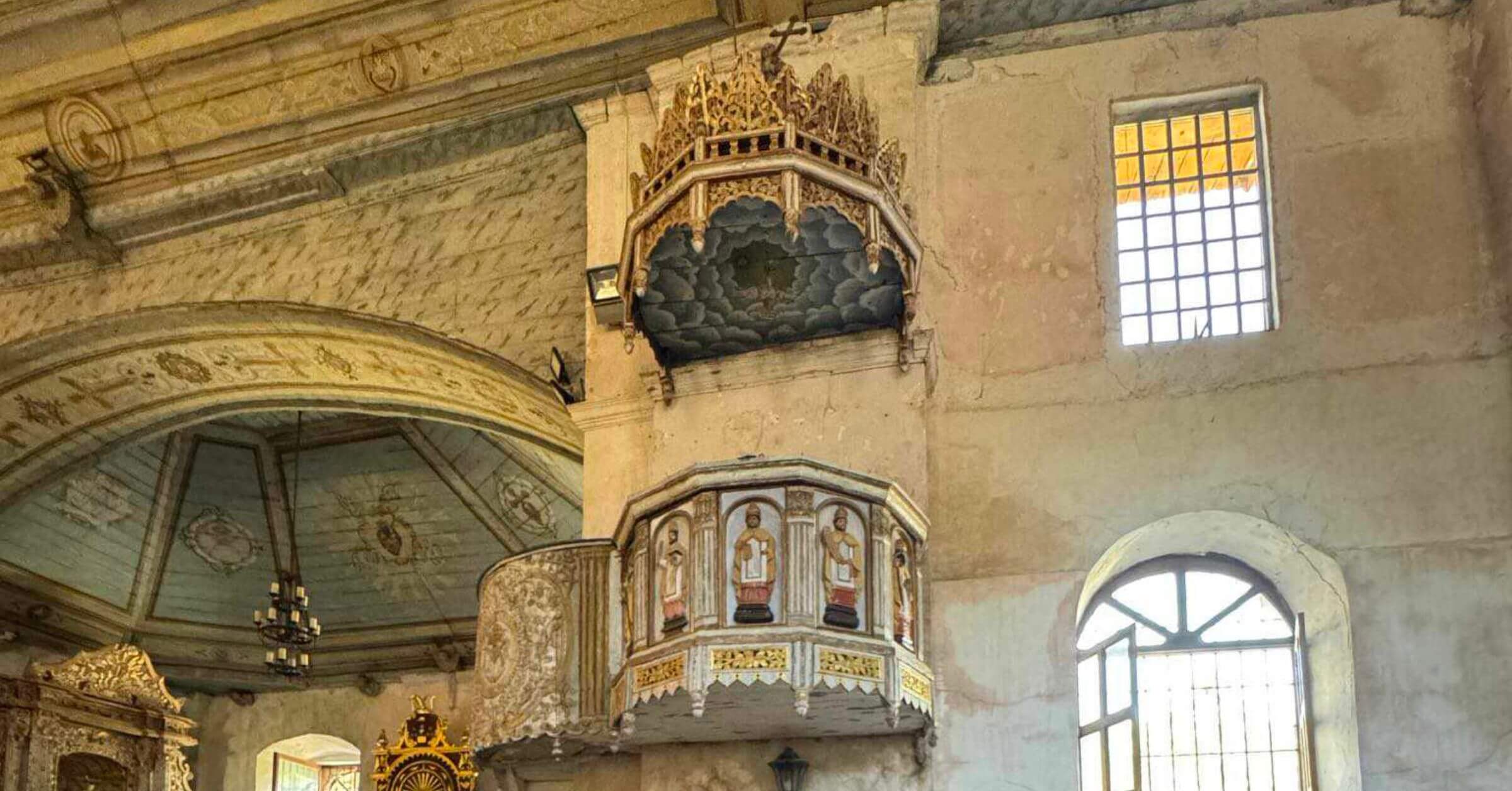Let the panels from the pulpit of the heritage church of Boljoon in southern Cebu be the property of the National Museum of the Philippines (NMP) but displayed at the parish from which it was taken, that’s the proposal of NMP Director General Jeremy Barns.
Barns, in an interview with Rappler, said the ownership of the panels should be discussed separately from its return to the Archdiocesan Shrine of Patrocinio de Maria Santisima in Boljoon. He stood his ground in claiming that the NMP owns the panels through the deed of donation they signed with collectors Edwin and Aileen Bautista.
Sharing pulpit panels
“We can easily have an agreement with the archdiocese that until something happens, let it be National Museum property, but we will put it there,” Barns said. He also repeated NMP’s offer for “sharing” the panels.
Can Cebu Archbishop Jose S. Palma, who issued a statement asserting church ownership of the panels, accept such an agreement?
No, according to separate interviews with officials of the Archdiocese of Cebu.
The canon law, the body of laws and regulations of the Catholic Church, provides a mechanism for church officials to give up ownership of church possessions. But a circular on “the care of the Church’s historical and artistic heritage” bars him from doing so.
“If Archbishop Palma agrees, that is equivalent to alienation of goods,” said Msgr. Raul Go, a canon lawyer with the Archdiocese of Cebu.

Alienation of property
Under regulations of the Catholic Bishops’ Conference of the Philippines, an archdiocese like Cebu has P5 million as minimum amount and P50 million as maximum amount of alienation of property, said CBCP Secretary General Msgr. Bernardo Pantin. The monetary value of the properties in question will determine the process and requirements for alienation of goods.
While the pulpit panels are deemed priceless, the monetary value of each is likely above P1 million, a church heritage expert said when asked to give a ballpark figure of their valuation. The amount falls under the archbishop’s discretion.
If the total monetary value of the panels exceeds the minimum amount of P5 million, Canon law sets additional requirements. These are “1) a just cause, such as urgent necessity, evident advantage, piety, charity, or some other grave pastoral reason; and 2) a written appraisal by experts of the asset to be alienated.”
Since the monetary value of the panels fall below the maximum amount of P50 million, canon law does not require Palma to seek the clearance of the Holy See, said Go. He just needs the advice of the admin board, which serves as finance council of the Archdiocese of Cebu.
But the issue on the panels, “is really much bigger than the canon law,” said Go.
Circular on church heritage
Fr. Brian Brigoli, the chairperson of the Archdiocesan Commission for the Cultural Heritage of the Church, said Opera Artis, a circular issued in 1971, sets regulations on how the church should care for its heritage.
“Works of art from the past are always and everywhere to be preserved so that they may lend their noble service to divine worship and their help to the people’s active participation in the liturgy,” said section 2 of the circular.
“It is clear that the local ordinary can’t alienate items of heritage value and works of art,” Brigoli said.
Section 6 lists conditions for adaptive use of the treasures. “When it is judged that any such works are no longer suited to divine worship, they are never to be given over to profane use. Rather they are to be set up in a fitting place, namely, in a diocesan or interdiocesan museum, so that they are accessible to all who wish to look at them.”
Section 7 stipulates that “precious objects, especially votive offerings, are not to be disposed of without permission of the Holy See.”
For Go, “The fact is clear, it was part of the pulpit, it was stolen, somebody bought it and donated it to the National Museum. I think the law is clear that anybody who buys stolen items is liable.”
If NMP is willing to return it to Boljoon, Go said, “why not donate them to the rightful owner? That is something I really find difficult to understand.”

Permanent loan
Barns’ proposed arrangement is what is called a “permanent loan,” said Dr. Maria Cristina Juan of the SOAS University of London. Juan has an MA in Museum, Heritage, and Material Culture Studies.
“This way (the NMP) continues to take care of the panels, conserve it etc. and protect it from deterioration,” Juan said in an interview via Facebook Messenger.
Such an arrangement, she said, “is a good compromise and everyone contributes a bit to the restitution. The religious, the sting of accountability, the NMP for accepting something without due diligence, and Bautista for not returning it directly to its real owners – basically the parishioners of the church building, not the church order,” she said.
“I feel that the church is not exactly blameless in this and should have some form of accountability,” Juan added.
Palma is scheduled to meet with the NMP to discuss the panels in the middle of April. He held a breakfast meeting on Monday to discuss issues in preparation for that meeting.
Max is a journalist and blogger based in Cebu. He has written and edited for such publications as The Freeman, The Independent Post, Today, Sun.Star Cebu, Cebu Daily News, Philstar Life, and Rappler.
He is also a mobile app and web developer and co-founded InnoPub Media with his wife Marlen.


Leave a Reply